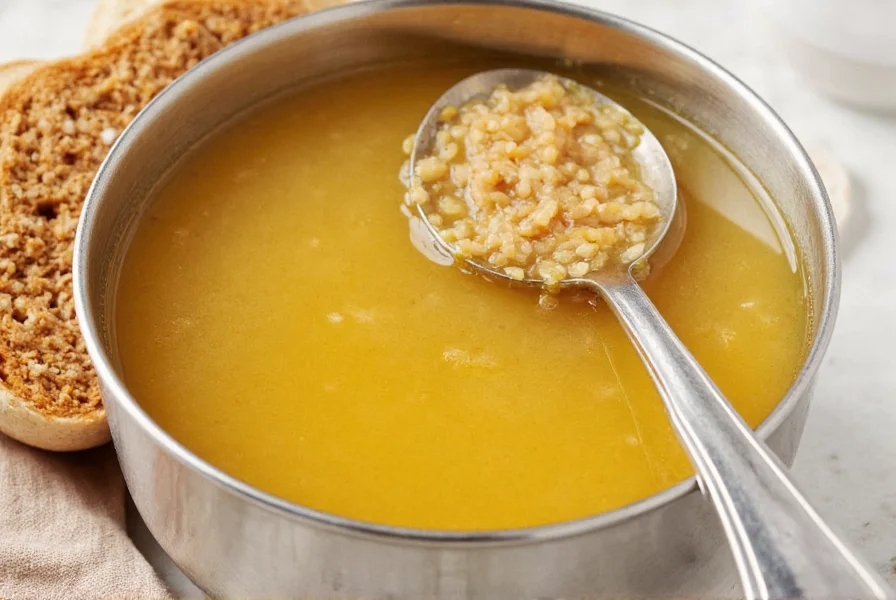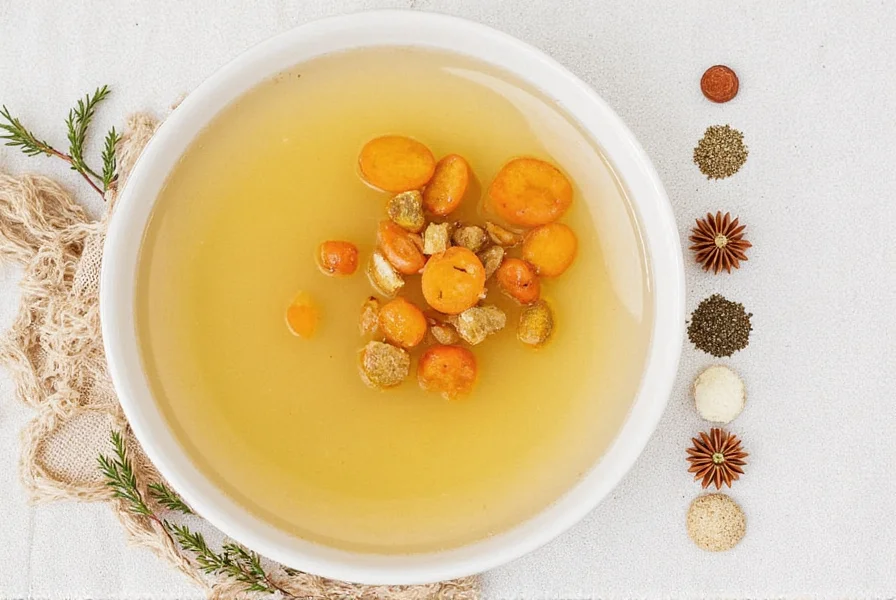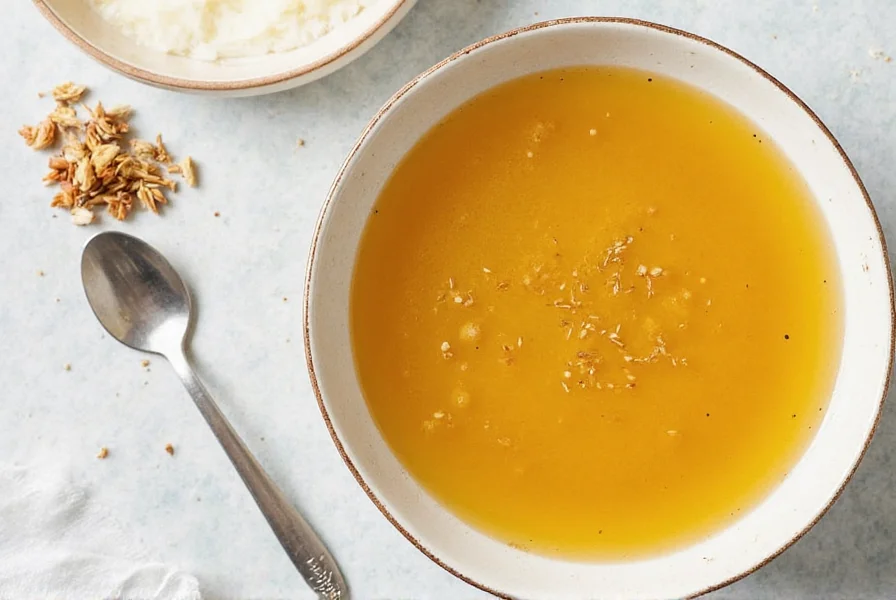Seasoning soup correctly is essential for creating rich, flavorful broths. Whether you're a beginner or experienced cook, mastering the right techniques can transform your soups from bland to exceptional. Here's a clear, step-by-step guide on how to season soup properly, including timing, ingredient ratios, and pro tips to avoid common mistakes.
| Ingredient | Flavor Profile | Common Uses |
|---|---|---|
| Salt | Briny, enhances flavor | Base for most savory dishes |
| Pepper | Spicy, earthy | Adds heat and depth |
| Bay Leaf | Earthy, herbal | Ideal for broths and stews |
| Thyme | Floral, minty | Great with root vegetables |
| Rosemary | Pine-like, aromatic | Perfect for hearty soups |
| Garlic Powder | Rich, savory | Essential in many global soups |
How to Use Soup Seasoning Like a Pro
- Layer Your Flavors: Add hardy herbs and foundational spices (like bay leaves, whole peppercorns, or dried herbs) at the beginning of cooking to allow their flavors to infuse. Add delicate herbs and final seasoning adjustments in the last 15-20 minutes of cooking.
- Taste as You Go: Always taste before adding more seasoning. Start with small amounts—you can always add more, but you can't remove excess.
- Use Whole Spices Sparingly: Remove whole spices like bay leaves or rosemary before serving to prevent overpowering flavors.
- Balancing Sweet and Sour: If soup is too salty, add a pinch of sugar or a splash of vinegar. For bitter notes, a touch of sweetness balances the profile.
- Dilution vs. Intensification: If too weak, reduce liquid by simmering uncovered. If too strong, dilute with unsalted broth or water.
Why Soup Seasoning Matters
Seasoning is the unsung hero of any great soup. Think of your soup as a canvas — without the right colors (i.e., flavors), it's just bland. Properly balanced seasoning enhances the natural taste of vegetables, meats, or legumes and brings depth and complexity to your broth.
In many traditional cuisines, soup seasoning isn’t an afterthought — it's a foundational element. Whether it’s the classic bouquet garni used in French stocks or the umami-packed kombu in Japanese dashi, the right blend can make all the difference.
Types of Soup Seasonings
- Classic Herbal Blends: Usually includes parsley, thyme, and bay leaves. Great for vegetable and chicken soups.
- Umami Boosters: Kombu, mushrooms, and soy sauce are excellent for adding depth, especially in vegan or vegetarian broths.
- Spicy Kick: For those who love heat, chili flakes, paprika, or cayenne pepper can spice up tomato-based or lentil soups.
- International Flavors: Try Italian herb mixes, Moroccan ras el hanout, or Thai lemongrass-based seasonings for world-inspired soups.

Best Brands for Ready-Made Soup Seasoning
| Brand | Features | Pros | Cons |
|---|---|---|---|
| Mrs. Dash Original Blend | No added salt, herbal mix | Healthy option, great for low-sodium diets | Lacks punch for heavy soups |
| Lawry's Soup Mix | Contains garlic, onion, and celery salt | Versatile, adds instant savoriness | High in sodium |
| Herbes de Provence by Simply Organic | Fragrant French blend | Perfect for delicate vegetable soups | Not ideal for heartier meat soups |
| McCormick Gourmet Collection | Chef-curated blends | High quality, customizable | Pricey compared to generic |

DIY Soup Seasoning Recipes
- Classic Vegetable Soup Base
- 2 tbsp onion powder
- 2 tbsp garlic powder
- 1 tbsp thyme
- 1 tbsp basil
- ½ tbsp marjoram
- ½ tbsp celery seed
- Umami Rich Mushroom Mix
- 1 tbsp dried shiitake mushroom powder
- 1 tbsp nutritional yeast
- 1 tsp smoked paprika
- ½ tsp black pepper
- ½ tsp salt
- Spicy Southwest Kick
- 1 tbsp chili powder
- 1 tsp smoked paprika
- ½ tsp ground cumin
- ½ tsp garlic powder
- ¼ tsp cayenne pepper
Buying Guide: How to Choose the Right Soup Seasoning
1. Intended Use
Are you making a light chicken noodle soup or a rich beef stew? Match the seasoning strength to the dish. Lighter soups benefit from subtle herbs, while heavier soups need bold flavors.
2. Dietary Restrictions
Check for allergens, sodium content, and whether the product is suitable for specific diets like keto, paleo, or vegan.
3. Freshness & Quality
Look for products that list whole ingredients rather than artificial additives. Avoid seasonings with unnecessary fillers or preservatives.
4. Versatility
A good soup seasoning should work well beyond just one recipe. Opt for multipurpose blends unless you're looking for a very specific flavor profile.
5. Budget-Friendly Options
You don't have to spend a fortune to get great flavor. Compare prices per ounce and read reviews to find hidden gems among budget brands.
Frequently Asked Questions About Soup Seasoning
When is the best time to add seasoning to soup?
The best approach is to layer your seasoning throughout the cooking process. Add hardy herbs and foundational spices (like bay leaves, whole peppercorns, or dried herbs) at the beginning of cooking to allow their flavors to infuse. Add more delicate herbs and final seasoning adjustments in the last 15-20 minutes of cooking. Always do a final taste test and adjustment just before serving, as flavors concentrate as liquid evaporates during cooking.
How much seasoning should I use for a standard pot of soup?
A good starting point is 1 teaspoon of dried herbs or seasoning blend per quart of soup. However, this varies significantly based on the specific ingredients and your personal taste. Always start with less—you can always add more, but you can't remove excess seasoning. Remember that salt should be added gradually; a general guideline is 1/2 teaspoon of salt per quart, but adjust according to your dietary needs and the sodium content of other ingredients.
My soup is too salty. How can I fix it?
If your soup is too salty, there are several remedies: 1) Add more unsalted liquid (broth or water) to dilute the saltiness, 2) Add starchy ingredients like potatoes or rice that can absorb some of the salt, 3) Add acidity with lemon juice or vinegar to balance the saltiness, 4) Add sweetness with a small amount of sugar or honey to counteract the salt. Prevention is best—always season gradually and taste as you go.
What's the difference between soup base, stock, and soup seasoning?
Soup base is a concentrated flavoring product (often paste or powder) that forms the foundation of a soup when diluted. Stock is a flavorful liquid made by simmering bones, meat, or vegetables. Soup seasoning refers specifically to the herbs, spices, and flavor enhancers added to adjust and perfect the taste of a soup. While related, they serve different purposes in soup preparation.
How long can I store homemade soup seasoning blends?
Properly stored in airtight containers away from light and moisture, most dry soup seasoning blends will maintain their potency for 6-12 months. For best results, label your containers with the date made. Dried herbs and spices gradually lose their flavor over time. If your seasoning blend doesn't smell strongly aromatic when you open the container, it's likely past its prime and should be replaced for optimal flavor.
Can I make effective soup seasoning without salt?
Absolutely. Many herbs and spices naturally enhance flavor without salt. Focus on umami-rich ingredients like dried mushrooms, nutritional yeast, garlic, onion, and smoked paprika. Acidic elements like lemon zest or vinegar added at the end can also brighten flavors. Commercial salt-free options like Mrs. Dash work well, or you can create your own salt-free blends using the DIY recipes provided in this article. Remember that salt enhances other flavors but isn't the only path to delicious soup.
Final Thoughts: Elevate Every Sip with the Right Seasoning
Mastering the art of soup seasoning doesn't require years of culinary training — just a bit of knowledge and a willingness to experiment. Whether you're reaching for pre-made blends or crafting your own custom mixes, the right seasoning turns every bowl into a memorable experience.
So next time you're simmering a pot of soup, remember: it's not just about the broth or the noodles — it's about how everything comes together in harmony. And that starts with the perfect sprinkle of soup seasoning.











 浙公网安备
33010002000092号
浙公网安备
33010002000092号 浙B2-20120091-4
浙B2-20120091-4